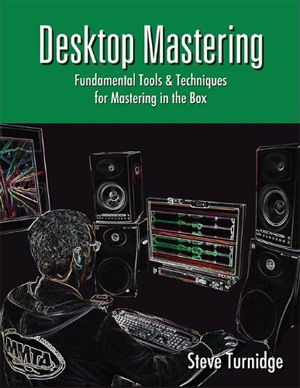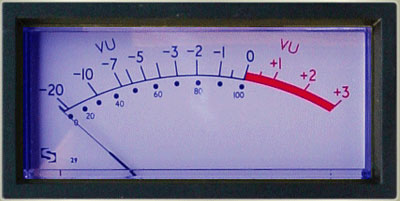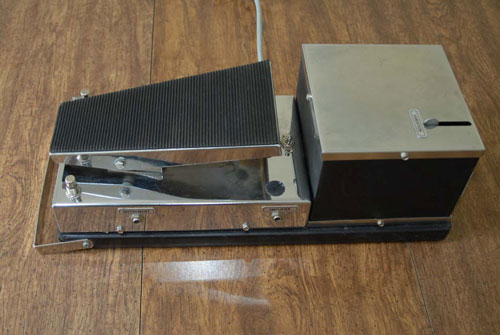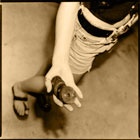I like listening to movie soundtracks every once and a while. By that I mean the incidental music that was specifically written for the movie as opposed to whatever pop songs they’ve decided to throw in there. The problem with many soundtracks, however, is that there is a high-pitched whine in the background. Most of my friends either can’t hear it (they think I’m nuts) or aren’t bothered by it, but for me it’s very noticeable.
The other day I was listening to “The Pagemaster” and there it was again. I decided to prove that I wasn’t nuts and ran a track through the old spectrum analyzer.
Clicky for the track I analyzed (Uncompressed .wav so we don’t lose any frequencies. Don’t worry, it’s just a short clip. BTW if you’re the Pagemaster and you feel I shouldn’t be putting your music on the Intertubes let me know and I’ll remove it.)
Do you hear it? Here’s the frequency analysis:
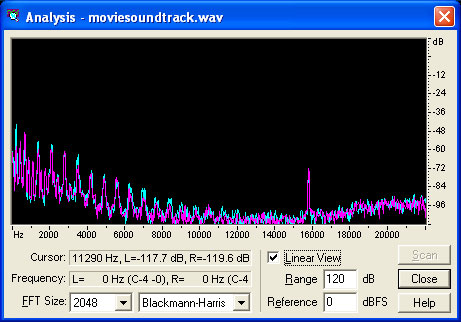
Sure enough, there’s a spike just below 16kHz that comes in at the start of the track and just kind of lives there. Apparently most of my friends can’t hear 16kHz. I imagine many sound engineers can’t either or they wouldn’t be putting out CDs with that there. But why is it there? Why only movie soundtracks?
My theory is that the orchestra being recorded is playing along to visuals from the movie they are scoring and that what we are hearing is the flyback transformer in whatever CRT monitors they are using. The horizontal scanning frequency of NTSC monitors is about 15.734kHz, which would support this theory.
This is my plea to everyone who records a film soundtrack: please use LCD monitors! James Horner, John Williams, Hans Zimmer, Danny Elfman, that guy who records stuff in his basement; please don’t record near any CRTs. They are coming through on the recordings, and they are detracting from your excellent compositions.
Thanks!
-Scott

